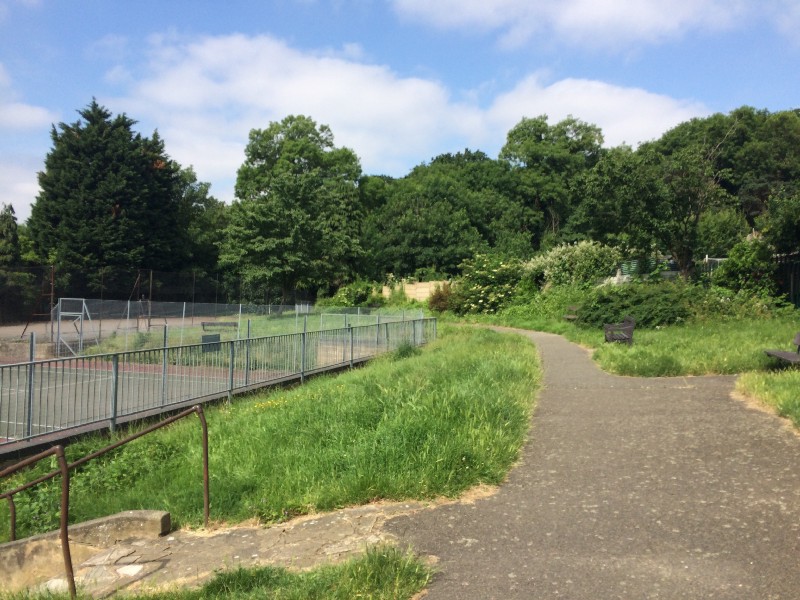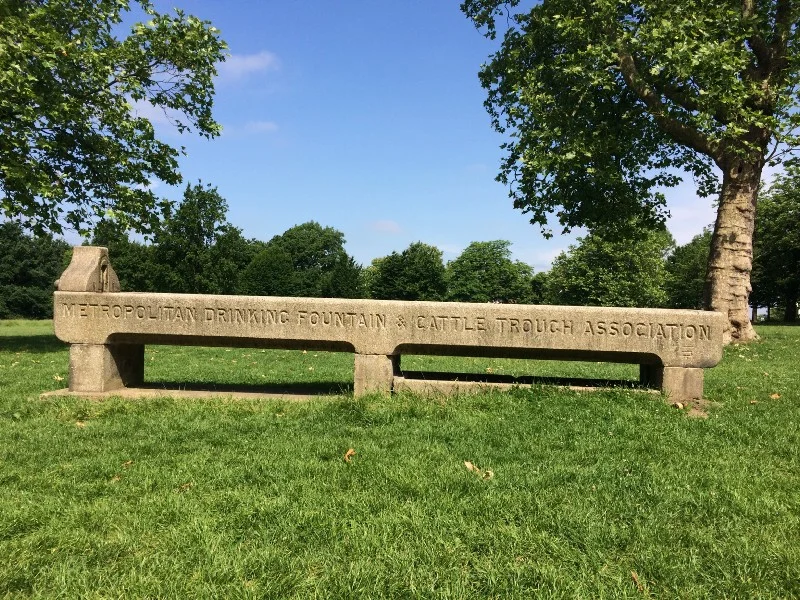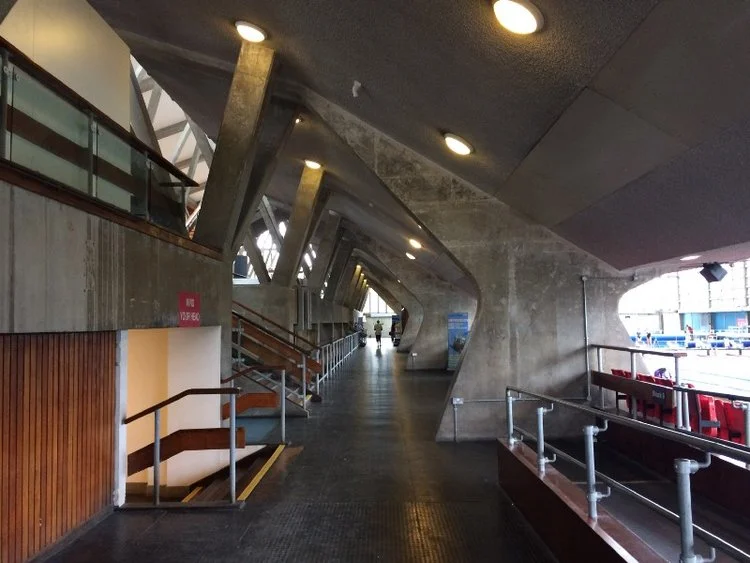Walking round London pt20: Beulah Hill to Streatham Common
Including the dog that saved the World Cup
(ICYMI: The writer is executing a 120km circumnavigation of the capital for charity. These blogs are to publicise the fundraising and consider the vernacular. There’s a full list of chapter/sections at the end of each blog.)
There’s history along Beulah Hill. Mendelssohn visited a mate who played the organ at the local church. Dickens also had a pal along here, of which more later. Little Menlo, the now-demolished home of George Gouraud – a U.S. Civil War captain turned Edison proselytiser, which explains why his gaff was known in the 1880s as the UK’s first all-electric house: lighting and such but also boot cleaner, carpet brusher and a direct phone line to Crystal Palace, so Captain George could listen to concerts from there. A lover of a good tune, he also demonstrated the phonograph at Little Menlo, presumably to gasps and faints.
Finally, before we turn off this densely-storied little slice of London, this is where the World Cup was hoisted aloft in triumph. Ahead of football’s quadrennial beanfeast in 1966, the Jules Rimet trophy went on display in Westminster; inevitably, it was nicked. Red faces and red herrings followed until a bloke called David Corbett took his dog Pickles out on a short walk to the nearest phonebox.
The mutt quickly discovered a package in a hedge on the corner of Beulah Hill and Spurgeon Road; Corbett bent down to find football’s premier trophy. He reported it to the authorities, who obviously made him their chief suspect but eventually he, and the dog, were duly rewarded for their find. Corbett got around £6,000 in various payments promised during the hunt, while Pickles got a year’s free dog food and a walk-on in a Galton and Simpson comedy.
We turn off the ridge and plunge down vertiginous Biggin Hill (Middle English, “Hill with or by a building”), with clear southward views of Croydon in the distance, although we’ll be veering strongly to the right and west. Branching to the right is Havisham Place, to the left Dickens Wood Close, but this isn’t one of those newbuild areas that self-ascribes random writers for a patina of culture.
You may recognise, perhaps with a shudder, the double chimneys of Croydon IKEA.
Charles Dickens spent a lot of time in Norwood, and that great chronicler of London life – whose motto may well have been “write what you know, and remember you get paid by the word” – duly mentioned it in several novels. Norwood homed Dickens’ early patron, the publisher William Hall, and his journalist uncle John Henry Barrow. One friend lived on Havisham Place, another more or less opposite: Springfield, which spanned the corner site from Beulah Hill down to what is now Dickens Wood Close, was the home of a Mr Townsend who regularly invited the writer to stay. It’s said that David Copperfield was written under the cedar tree there, the house becoming that of Copperfield’s boss Mr Spenlow.
Passing allotments arrayed across the steep hillside, we cross the road, pass the 5km mark and dive up an alley. Tennis courts materialise, inhabited by a couple of topless fortysomething blokes sweating off the excess pounds in what has become the glorious morning sun. The courts show the usual municipal archaeology, also in evidence elsewhere on the Capital Trail (notably in Lyttleton Fields near Hampstead Garden Suburb): newer courts gleam colourfully alongside discarded and disregarded older versions, which are now essentially gravel-covered tarmac pens behind rusting fences. It won’t be the last tennis I encounter on this quarter of the quest: I’ll be passing the All-England Lawn Tennis and Croquet Club, 10 miles’ walk and 10,000 hours’ practice away.
The tennis courts were created just before the Second World War when the council had the foresight (and finance) to buy Biggin Wood, a slice of the ancient Great North Wood which survives to this day. It had been the grounds of Biggin Wood House, owned by James Epps, who kept the Victorians in cocoa but kept a very low profile: he only ever granted one interview, concentrating on amassing a fortune which would dwarf those of his consumer-comestible contemporaries Jeremiah James Colman (1830-98), Alfred Bird (1849-1922) and James Horlick (1844-1921). A curious character, Epps refused to visit Biggin Wood House in May because the nightingales kept him awake.
The nightingales outlasted Epps and his family – the house became derelict and burnt down, at which the public pressured the council into their purchase from Epps’s granddaughter. Now it’s preserved, protected and packed with wildlife from bluebells to woodpeckers, a beautiful place to walk through on a sunny Saturday morning.
Some changes are obvious, others are subtle. By the time we emerge from Biggin Wood, we’ve crossed an invisible but important boundary: between SE and SW postcodes. Last time, the boundary was a bit more obvious – it required a five-minute walk through the Greenwich foot tunnel – but we are gradually rounding the bottom corner of our orbital walk.
The woodland path, Covington Way, opens up into suburban housing; we’re now tracing westwards across the side of the ridge, the land to our left falling away towards Croydon. The housing stock is interwar, with examples of the sunburst windows so typical of that era and consequently every World War II drama.
Then it’s into Norwood Grove. Glorying in those long southward views, this was once part of Great Streatham Common, previously recorded in the Domesday Book as Lime Common, subsequently part-enclosed when given by King Charles I to the Duke of Portland for sport (well, shooting things). There’s lots of open space dotted with mature trees (and, in this instance, a dog school) but also a trail up through a denser woodland path to a partially-hidden mansion.
What we now know as Norwood Grove House was most famously occupied by Arthur Anderson. Shetlands-born of poor stock, he served in the Napoleonic Wars and fetched up penniless in London, surviving on “two pennyworth of bread and cheese and a pint of porter every other day”. Love saved him: his wife’s father, a Scarborough ship-owner, introduced Anderson to a ship-broker with whom he formed the Peninsular and Oriental Steam Navigation Company, better known as P&O.
Anderson moved into Norwood Grove, now a Grade II-listed mansion known locally as the White House, and a fraction smaller than it once was thanks to the Luftwaffe. With a fountain, orangery and various ornamental pleasantries, it’s a slice of the shires transported to inner London, more Norfolk than Norwood.
Sliding down off what is signposted as Gibson’s Hill upon which the house sits, Copgate Path passes a lovely little lodgehouse and segues neatly onto Streatham Common past more Grade II-listed buildings: Rookery Gardens, on the site of a place Queen Victoria stayed.
The lodgehouse.
She was taking the waters at Streatham Spa, discovered in 1659 and quickly exploited for tourist potential. Initially called Well House when built in 1783, it was renamed the Rookery after the waters became contaminated in the early 1790s (fear not, a fresh well was dug nearby). The house fell into disrepair and was demolished after the London County Council bought the estate in 1912, opening the formal gardens to the public.
I don’t divert into the gardens as I have a path to follow, and it opens up directly onto Streatham Common, the first of several south-western greenswards I’ll cross today. It was bought in 1884 from the Ecclesiastical Commissioners by the Metropolitan Board of Works, who duly preserved it as public open space.
What is now the Common is part of that ancient Great North Wood, saved from agricultural or domestic development by its rugged terrain; it also avoided being claimed by rapacious royals desperate for somewhere to ride around killing things. Instead, the trees catered for elements of industry: oak timber for the naval dockyards, bark for the Bermondsey leather tanners, while the Croydon side produced charcoal (hence Colliers Wood).
Nearby streets became bedecked with rather nice villas, particularly on the north side’s Coventry Park estate (after Coventry Hall, named for the 7th Earl thereof, demolished 1982 for flats and offices). Such sizeable housing stock, near to railway stations, underwent a typical London life-cycle. Initially middle-class, it slid down the scale in the third quarter of the last century before being revivified recently by the housing boom and a desire for period properties. Two-thirds of householders in the Streatham Wells ward are socio-economic ABC1s.
Coming up next: Very Moorish
The Mencap Capital Challenge is a charity walk circling London in four quarters, each roughly 30km. You can donate or sponsor the writer at justgiving.com/garyparkinson1974. You can also join in: the West quarter (Richmond to Hendon) will take place on Sat 7 July.
NORTHERN QUARTER, SAT 5 MAY 2018
• Pt1: Wembley to East Finchley • Pt2: …to Finsbury Park
• Pt3: …to Clissold Park • Pt4: …to Springfield Park
• Pt5: …to Hackney Wick • Pt6: …to Bow Back River
• Pt7: …to Channelsea River • Pt8: …to Royal Victoria Dock
EASTERN QUARTER, SAT 26 MAY 2018
• Pt9: Victoria Dock to North Woolwich Pier • Pt10: …to Maryon Park
• Pt11: …to Hornfair Park • Pt12: …to Oxleas Wood
• Pt13: …to Eltham Palace • Pt14: …to Grove Park
• Pt15: …to Beckenham Place Park • Pt16: …to Penge
• Pt17: …to Crystal Palace Park • Pt18: …to Upper Norwood
SOUTHERN QUARTER, SAT 9 JUN 2018
• Pt19: Crystal Palace to Beulah Hill • Pt20: …to Streatham Common
• Pt21: …to Tooting Bec • Pt22: …to Wandsworth Common
• Pt23: …to Wimbledon Park • Pt24: …to Richmond Bridge
WESTERN QUARTER, SAT 7 JUL 2018
• Pt25: Richmond Bridge to Isleworth • Pt26: …to Hanwell Locks
• Pt27: …to Horsenden Hill • Pt28: …to Sudbury Hill
• Pt29: …to Wembley, and that's that















